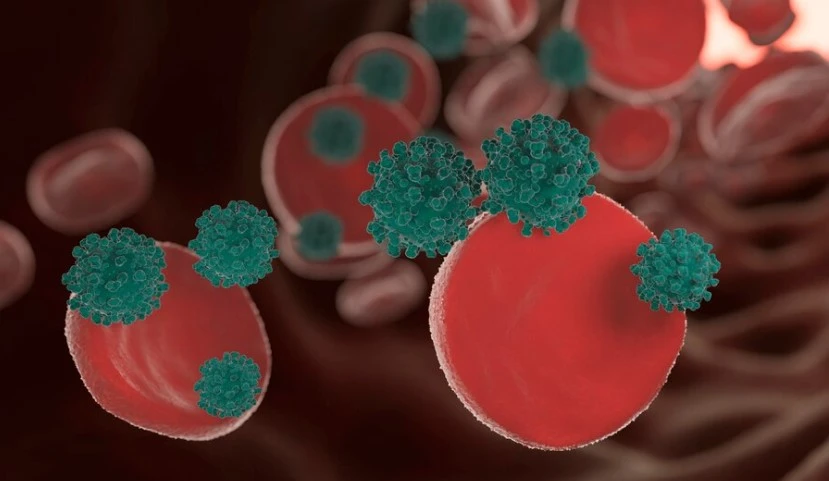Eosinophils normal range falls between 1% and 6% of your white blood cells. This typically translates to 30 to 350 eosinophil cells per microliter of blood.
Understanding the eosinophil count is crucial for diagnosing various health conditions. Eosinophils are a type of white blood cell that play a pivotal role in the body’s immune response, especially in combating parasitic infections and in allergic reactions. Enhanced levels of eosinophils can indicate potential health issues such as allergies, asthma, or even more serious conditions like autoimmune diseases.
Conversely, a low eosinophil count could suggest alcohol intoxication or the effects of certain steroid medications. Regular blood tests can help monitor your eosinophil count, ensuring it remains within the healthy range and providing early signs of possible medical concerns. Health professionals rely on this data to tailor treatment plans and manage patient health effectively.
Eosinophils Normal Range Percentage
Eosinophils, a type of white blood cell, play a vital role in the body’s immune response, especially when it comes to combating parasites and allergic reactions. Understanding the normal range for eosinophils is crucial for diagnosing and monitoring various medical conditions.
Typically, these cells make up about 1% to 6% of white blood cells in the bloodstream, a percentage that may slightly vary depending on the testing lab’s standards. Elevated levels might indicate an allergic response or parasitic infection, while lower levels could suggest a potential suppression of the immune system.
Regular blood tests can help keep track of these levels, ensuring that any deviation from the norm is promptly addressed. It’s essential to consult a healthcare professional to interpret test results accurately and to determine if any further investigation or treatment is necessary.
What If the Eosinophils Count Is 14%?
Eosinophils are white blood cells playing a crucial role in the body’s immune response, especially involving allergies and infections. A typical eosinophil count falls between 1% and 6% of the total white blood cell population. If a blood test reveals that eosinophils make up 14% of white blood cells, it likely indicates an unusual condition such as an allergic reaction, parasitic infection, or in some cases, an autoimmune disorder.
Elevated levels could prompt healthcare professionals to conduct further examinations to determine the underlying cause and address any associated health concerns. It’s essential for individuals with such irregularities in their bloodwork to seek medical advice and undergo additional testing if necessary.
Understanding the implications of aberrant eosinophil percentages can lead to timely and effective treatment interventions.
How To Reduce Eosinophil Count
Maintaining your health often involves keeping blood components within their normal ranges, and eosinophils are no exception. Elevated counts could signal anything from allergies to more complex health conditions. To manage higher levels, lifestyle adjustments and medical interventions can work in tandem.
Dietary changes, such as incorporating anti-inflammatory foods like omega-3 rich fish and leafy greens, can support immune function and may help in reducing these white blood cells. Regular exercise also plays a crucial role in regulating immune responses. Consulting with healthcare providers allows for tailored treatments, potentially including medication, to address underlying causes of the imbalance.
By consistently implementing these strategies, individuals can work towards restoring their eosinophil count to its optimal level.
Frequently Asked Questions for Eosinophils Normal Range
What Is a Good Range for Eosinophils?
A healthy range for eosinophils is typically 1-6% of the white blood cell count or 50-500 eosinophils per microliter of blood.
What Is an Alarming Eosinophil Count?
An alarming eosinophil count typically exceeds 500 cells per microliter of blood. High eosinophil levels may indicate allergic reactions or parasitic infections. Consult a healthcare provider for a precise diagnosis and treatment options.
What Are Abnormal Eosinophil Levels?
Abnormal eosinophil levels refer to an unusually high or low count of eosinophils, a type of white blood cell, in the blood, indicating potential allergic reactions or parasitic infections.
Is 7 Percent Eosinophils High?
An eosinophil count of 7 percent is slightly elevated, as the normal range is about 1-4 percent for most individuals.
What Are The Eosinophils Normal Range?
Eosinophils are typically measured as a percentage of white blood cells. A normal range is usually considered to be 1-6%.
Conclusion
Understanding your eosinophil count is key for optimal health. By keeping track of this number, you can detect and address potential health issues early. Remember, a normal range typically falls between 1% and 6% of your white blood cells. Always consult your doctor for personalized advice.




Leave a Reply